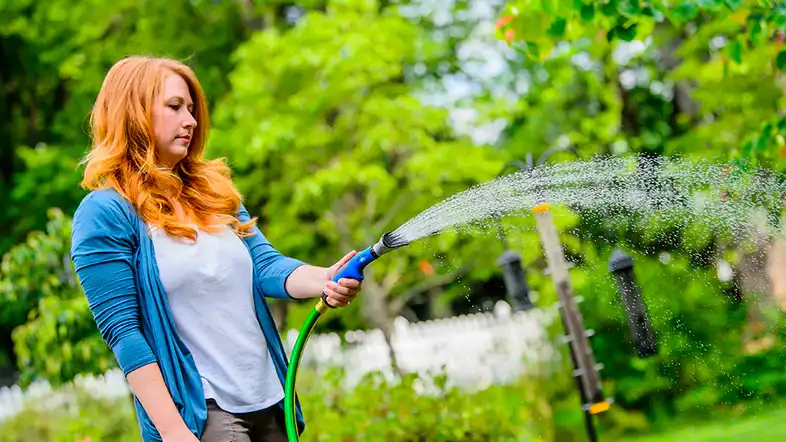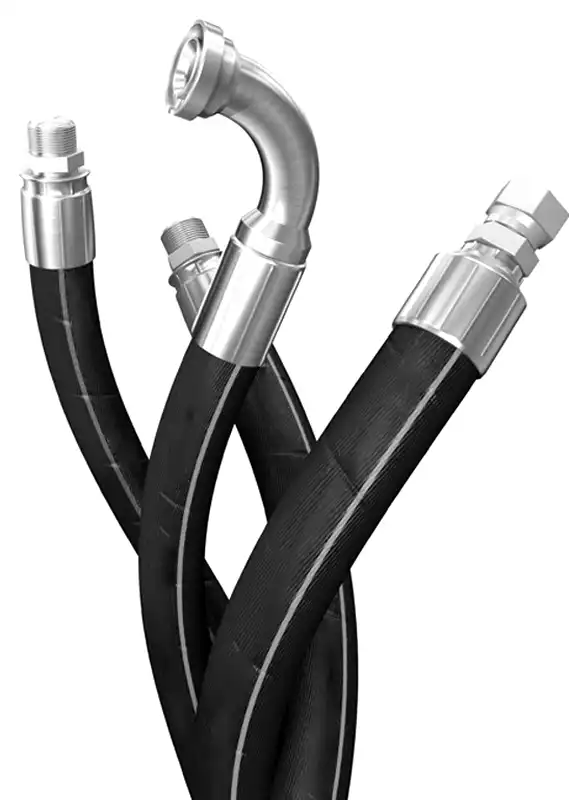![]()
When it comes to gardening and outdoor chores, having a reliable garden hose is crucial. But have you ever wondered about the flow rate of your garden hose? The garden hose flow rate plays a significant role in determining how effectively water is delivered to your plants, lawn, and other outdoor spaces. In this article, we’ll delve into the world of garden hose flow rates, covering key aspects from measurement techniques to optimizing your watering experience.
What Is Garden Hose Flow Rate

Garden hose flow rate refers to the amount of water that can pass through a garden hose in a given period of time.
It is typically measured in gallons per minute (GPM) or liters per minute (LPM). The flow rate of a garden hose depends on several factors, including the diameter of the hose, the water pressure supplied by the source, and any potential obstructions or restrictions in the hose or nozzle.
A larger diameter hose generally allows more water to flow through, resulting in a higher flow rate. Similarly, higher water pressure will also lead to a greater flow rate. However, if the hose is kinked, partially blocked, or if a nozzle is attached that restricts the flow, the actual flow rate will be reduced.
Understanding the flow rate of a garden hose can be important for tasks such as watering plants, cleaning outdoor surfaces, or filling containers. Choosing the right hose diameter and ensuring proper water pressure can help you achieve the desired flow rate for your specific needs.
Hose Diameter and Flow Rate

The diameter of a hose has a significant impact on the flow rate of water passing through it. Generally, a wider diameter hose allows for a higher flow rate compared to a narrower one.
When water flows through a hose, it experiences friction against the inner surface of the hose. A wider hose has more space for water to move, resulting in less friction and less resistance to flow. As a result, more water can pass through in a given amount of time, leading to a higher flow rate.
Conversely, a narrower hose constrains the movement of water, causing more friction and resistance. This restricts the flow of water and results in a lower flow rate.
It’s important to choose the right hose diameter based on your intended use. For tasks that require a high flow rate, such as filling large containers or quickly watering a garden, a wider diameter hose is preferable. On the other hand, for more precise watering or tasks that don’t require as much water volume, a narrower hose might be suitable.
Keep in mind that other factors like water pressure and any obstructions in the hose or nozzle can also affect the actual flow rate you experience.
Garden Hose Flow Rate Chart
Here’s a simple garden hose flow rate chart that provides a general idea of the typical flow rates for different hose diameters at various water pressures. Keep in mind that these values are approximate and can vary based on factors like hose quality, water source pressure, and nozzle type.
| Hose Diameter (inches) | Water Pressure (PSI) | Flow Rate (GPM) | Flow Rate (LPM) |
|---|---|---|---|
| 1/2 | 20 | 2.5 – 4.0 | 9.5 – 15.1 |
| 40 | 4.0 – 6.5 | 15.1 – 24.6 | |
| 60 | 5.0 – 8.0 | 18.9 – 30.3 | |
| 80 | 6.0 – 9.5 | 22.7 – 36.0 |
| 100 | 6.5 – 10.5 | 24.6 – 39.7 | |
|---|---|---|---|
| 5/8 | 20 | 4.0 – 6.5 | 15.1 – 24.6 |
| 40 | 5.0 – 8.0 | 18.9 – 30.3 | |
| 60 | 6.0 – 9.5 | 22.7 – 36.0 | |
| 80 | 7.0 – 11.0 | 26.5 – 41.6 |
| 100 | 7.5 – 12.0 | 28.4 – 45.4 | |
|---|---|---|---|
| 3/4 | 20 | 6.0 – 9.5 | 22.7 – 36.0 |
| 40 | 7.5 – 12.0 | 28.4 – 45.4 | |
| 60 | 9.0 – 14.0 | 34.1 – 53.0 | |
| 80 | 10.0 – 16.0 | 37.9 – 60.6 | |
| 100 | 11.0 – 18.0 | 41.6 – 68.1 |
Please note that the flow rates are given in ranges because they can vary depending on the specific hose, water pressure, and other factors. This chart should give you a general idea of the flow rates you can expect from different hose diameters and water pressures.
Typical Garden Hose Flow Rate in Litres
The typical flow rate of a garden hose is commonly measured in gallons per minute (GPM) in many regions, especially in the United States. However, since you’ve requested the information in liters, I’ll provide you with the approximate conversion of the typical garden hose flow rate from GPM to liters per minute (LPM).
The average flow rate of a standard garden hose is around 5 to 10 gallons per minute (GPM), which is equivalent to approximately 18.9 to 37.9 liters per minute (LPM).
Please note that the actual flow rate can vary based on factors such as the diameter of the hose, water pressure, and any restrictions or obstructions in the hose or nozzle. If you need precise flow rate information, it’s recommended to use a flow rate measuring device or consult the manufacturer’s specifications for the specific garden hose you’re using.
Factors Affecting Garden Hose Flow Rate
Several factors influence the flow rate of your garden hose:
Water Pressure:
Water pressure from your source greatly impacts the flow rate. Higher water pressure usually results in a higher flow rate. However, it’s essential to strike a balance to avoid damaging the hose or causing excessive splashing.
Hose Diameter:
The diameter of the hose affects the flow rate. A wider hose allows more water to flow through, increasing the flow rate. Conversely, a narrower hose restricts water flow, resulting in a lower rate.
Hose Length:
Longer hoses can experience more friction, which reduces the flow rate. If you need a longer hose, consider opting for a larger diameter to counteract this effect.
Nozzle Type:
Different nozzle types can affect the flow rate. Adjustable nozzles offer flexibility, allowing you to control the flow, while a fixed nozzle may have a constant flow rate.
How to Measure Garden Hose Flow Rate
Measuring your garden hose flow rate is a straightforward process. Here’s how you can do it:
- Gather Your Tools: You’ll need a bucket with gallon markings and a stopwatch.
- Attach Nozzle: Attach the nozzle you typically use to the hose.
- Turn On Water: Turn on the water to your desired pressure and flow.
- Start Timing: Place the hose in the bucket and start the stopwatch simultaneously.
- Measure Water: Let the water flow into the bucket for one minute. Once the minute is up, turn off the water.
- Calculate Flow Rate: Check how many gallons of water accumulated in the bucket. This is your flow rate in GPM.
You can try the garden hose flow rate calculator to work out your result to select the best garden hose for your project.
Garden Hose Flow Rate Calculator
Optimizing Your Garden Hose Flow Rate
Achieving the right flow rate can improve the efficiency of your watering routine and save water. Here are some tips to optimize your garden hose flow rate:
- Choose the Right Hose: Select a hose with an appropriate diameter for your needs. A balance between diameter and length is key.
- Use a Flow Regulator: Consider using a flow regulator attachment to control the water pressure and optimize the flow rate.
- Regular Maintenance: Keep your hose and nozzle clean to prevent blockages that can affect the flow rate.
FAQs:
How do I know if my flow rate is too low?
If your plants aren’t receiving sufficient water coverage and the soil remains dry after watering, your flow rate might be too low.
Can a nozzle increase flow rate?
Nozzles don’t increase the flow rate; they control it. Some nozzles offer adjustable settings to achieve the desired rate.
What’s the recommended GPM for garden hoses?
A flow rate of around 5-10 GPM is suitable for most garden watering needs.
Can using a narrow hose increase pressure?
While a narrow hose may slightly increase pressure, it’s not a recommended method to achieve higher flow rates as it can damage the hose.
Are expandable hoses suitable for high flow rates?
Expandable hoses can provide decent flow rates, but always check the manufacturer’s specifications for optimal performance.
How often should I check my hose’s flow rate?
It’s a good practice to measure your hose’s flow rate at the beginning of each watering season.
Conclusion:
Understanding the garden hose flow rate is pivotal for efficient gardening and outdoor maintenance. By grasping the factors that influence flow rates and learning how to measure and optimize them, you can ensure that your plants and lawn receive the right amount of water without wastage. With the right hose, proper maintenance, and a keen eye on flow rates, you’ll master the art of effective and responsible watering.


